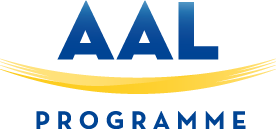GUIDING LIGHT
Light is used to meet visual needs of human (e.g. highlighting risks of falling), is applied for temporal orientation throughout the day (e.g. emphasising day-night rhythm), for spatial navigation during activities of daily living (e.g. illumination of a defined location areas) and is used as remembering as well as information signal (e.g. light spots and light signals). Light therefore has great potential for attenuation of age-related mobility impairments caused by reduced spatio-temporal orientation, worry about getting lost, and fear of falling.
To make use of light in this sense, we will implement a light wayguidance system in private homes of older people that performs a time- and motion-controlled change of intensity and colour temperature of room lighting. We will use existing lighting in these rooms and supplement them with additional lighting equipment and electrical installation technologies. After modification light characteristics of lamps will change automatically according to the personal daily routine of residents.
This, however, will not be a rigid system. At the same time mobility parameters of the residents will be monitored (such as movements in and outside the home) and the results of analysing these data will be used to change the programming of light variations. The adjustment of light programming will be done automatically, nevertheless, residents can manually readjust their lights at any time.
The degree of mobility is an important indicator of health. For this reason we will integrate relevant parameters into a distributed information system as the basis for decisions about preventive provisions. This will give residents at any time insight into their health status, which can be shared with persons of trust (e.g. relatives, doctor).


